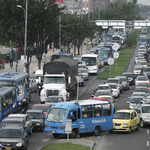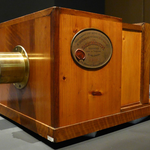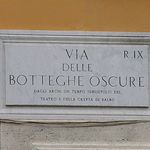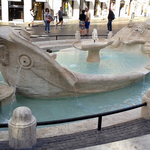Porta Pia
It was commissioned by Pious IV, Giovanni Angelo Medici by name and created between 1561 and 1564 by Michelangelo close to the ancient Porta Nomentana in the end of the Strada Pia.
It is the last Michelangelo's work of art and it marks the transition point between the High Renaissance and the Baroque.
In the middle of the brick body crowned by decorative battlement one can see the magnificent travertine pediment with channelled pilaster strip and rich compound tympanum.
On the sides one can find window spans surmounted by little windows richly framed.
A bit higher there are the curious motives of paten façade of the stole (for some allusions in the art of the surgeons and barbers from where the Medici were descending according to the tradition.)
The high stone on the top with the Arms of Pious IV of Jacopo del Duca flanked by two angels of Nardo Dè Rossi in 1564 partially crashed in the last quarter of the XVIth century was rebuilt together with the neobaroque pediment and the coat of arms of Pious IX
by Virginio Vespignani (1853-61).
In the Via Nomentana the outside of the gate belongs either to Virginio Vespignani (1864) that is in the form or the triumphal arch on the barrel-vault flanked by niches with the statues of Sant' Alessandro and Sant' Agnese.
The two doors are joined by low buildings which flank a courtyard decorated by the bronze busts of Lamarmora, Pagliari, Manara, Mamelli and by the monument to Enrico Toti where is the entry to Museo Storico dei Bersaglieri.
Coming out of the Porta leaving behind the Via XX Settembre the prospect starting from Quirinale), one can reach the homonimus square with the monument to the Bersagliere in the centre.
The monument represents an assaulting Bersagliere on a high pedestal. It is a bronze work-of-art executed in 1932 by the left-handed architect Italo Mancini and the sculptor Publio Morbiducci. On both sides of the pedestal there are six high-relieves always in bronze that recall the episodes of the history of Bersaglieri guard: Bridge of Goito 1848, Luciano Manara 1849, Porta Pia 1870, Sciara Sciat 1911, Enrico Toti 1916 and a bank of Villasanta river 1918.
Right on the left of the square out of the Wall there is a stone through which the Italian troops entered in Rome on the 20th of September in 1870. One can see a marble sample created after the drawing of Adolfo Apolloni in 1920 with Giovanni Bovio inscription. In front of it there is the "memorial column" with ancient trunk surmounted by the bronze Victory goddess of Giuseppe Guastalla.
In front of the Porta the wide via Nomentana with the rows of trees begin. It is traced along the ancient Via Consolare that leads to Nomentum, Mentana.
In the Via Nomentana there are various parks and villas.
Villa Torlonia, which is the big neo-classical complex. It was started by architect Valadier for Giovanni Torlonia in 1806 and continued by Gian Battista Caretti in 1842 for Alessandro Torlonia. During the Fascism it was a private residence of Benito Mussolini.
- One can also find Villa Paganini which was already the public park from the time of Giulio Alberoni. At the entrance it has the monument to the fallen of Nomentano andSalario.
- There is also villa Maria Luisa which was the park of Rosa di Mirafiori, the morganatic wife of Vittorio Emanuele II.

 The records of Rome. Big numbers, not always enviable, for a big city.
The records of Rome. Big numbers, not always enviable, for a big city. New Phot-O-Matic section. To spend some time looking at photos (also) of Rome.
New Phot-O-Matic section. To spend some time looking at photos (also) of Rome. The administrative, urban, toponymic and imaginative subdivisions of Rome.
The administrative, urban, toponymic and imaginative subdivisions of Rome. Notice for tourists: in Rome you drink for free. Historical fountains and 'big noses'.
Notice for tourists: in Rome you drink for free. Historical fountains and 'big noses'. Free museums return on the first Sunday of the month.
Free museums return on the first Sunday of the month.